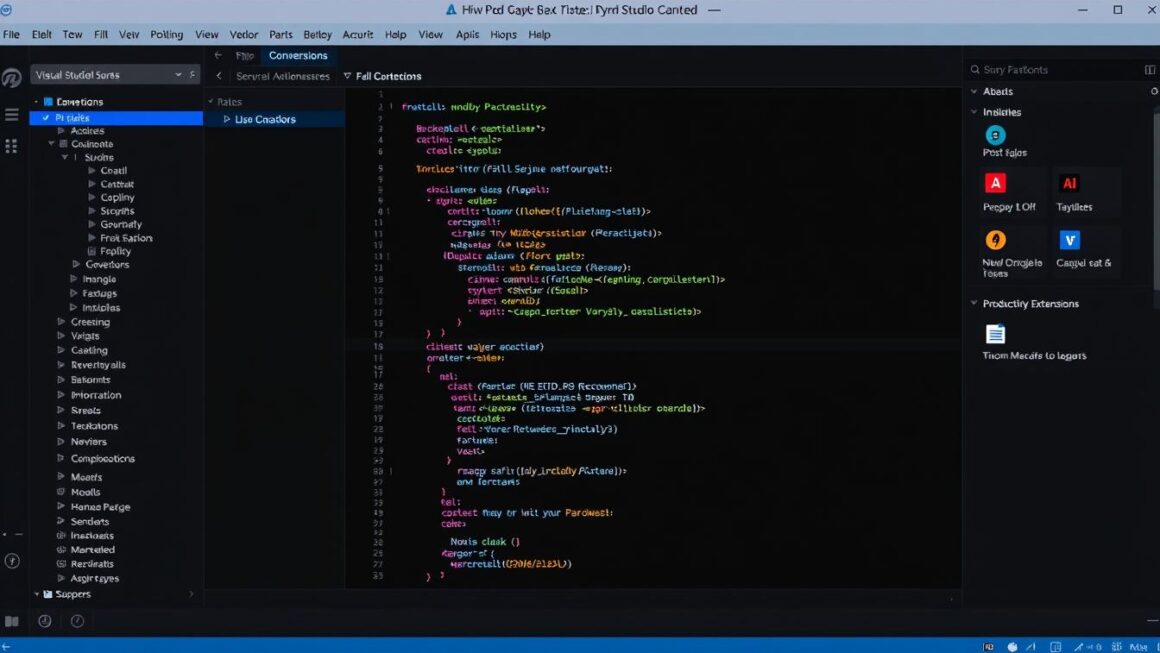Did you know a 33% surge in adoption occurred for one operating system in just eight months? While still a niche player, this platform’s growth hints at a larger story. Many are trading traditional software for solutions that prioritize flexibility and control.
Frustrations with forced updates, pre-installed apps, and performance slowdowns have pushed users to explore alternatives. Modern open-source options now rival mainstream systems in ease of use. Distros like Ubuntu and Linux Mint offer intuitive interfaces even casual users can navigate.
Gaming once seemed impossible outside proprietary ecosystems, but tools like Proton now let thousands of Windows titles run seamlessly. Valve’s Steam Deck, powered by Linux, further proves its gaming potential. This shift mirrors past tech revolutions, like the move from WordPerfect to Microsoft Office decades ago.
What makes this moment different? Communities, not corporations, drive innovation. As bloated software loses favor, streamlined alternatives gain momentum. We’re witnessing a quiet rebellion – one that could reshape how we interact with technology.
Key Takeaways
- Open-source operating systems grew 33% in eight months
- Frustration with forced updates drives users toward customizable alternatives
- New distros offer Windows-like simplicity without performance drag
- Gaming breakthroughs make Linux viable for mainstream users
- Current trends echo historic software ecosystem shifts
- Community-driven development challenges corporate software models
The Rise of Linux in a Changing Tech Landscape
Tech revolutions often start quietly, and this one’s no exception. Users increasingly demand software that respects their choices rather than locking them into rigid ecosystems. This shift reflects deeper changes in how we value digital autonomy.
Understanding the Shift in User Preferences
Modern users prioritize three core needs:
- Customization: Tailoring interfaces to personal workflows
- Control: Managing updates and system resources
- Privacy: Avoiding unwanted data collection
Proprietary operating systems often struggle with these demands. Forced updates disrupt workflows, while pre-installed apps consume resources. Open-source alternatives eliminate these pain points through modular designs.
| Feature | Open-Source OS | Proprietary OS |
|---|---|---|
| Update Control | User-decided | Automatic |
| Software Bloat | Minimal | Common |
| Customization | Full access | Limited |
Historical Context and Industry Trends
The current transition mirrors past shifts from closed systems like AOL to open web standards. When Windows Vista introduced heavy hardware demands in 2007, many switched to lightweight alternatives. Today’s linux market growth follows similar logic – users seek efficiency in resource-heavy times.
Industry data shows 68% of developers now prefer open-source tools for their flexibility. This preference trickles down to everyday users through improved accessibility. What began as niche software now challenges established players by addressing modern needs head-on.
Benefits for Developers, Privacy Advocates, and Power Users
Custom software environments are becoming non-negotiable for tech professionals. Over the past year, StatCounter reports a 40% increase in developer adoption of open-source platforms. Why? Because unlike traditional systems, these tools let users reshape their digital workspace down to the code level.
Embracing Control and Customization
Developers thrive when they can tweak kernels or script unique automation workflows. One engineer shared how migrating from proprietary software “unlocked capabilities I didn’t know existed” after just three months. Privacy-focused users appreciate built-in tracking prevention and update schedules they control – no surprise reboots during critical tasks.
Power users gain three key advantages:
- System mastery: Modify desktop environments or strip unnecessary components
- Resource allocation: Direct CPU/GPU usage without background processes interfering
- Security ownership: Audit code personally instead of trusting corporate promises
These freedoms address frustrations many face with mainstream operating systems. A recent survey found 62% of technical users switched platforms due to limitations in software like Windows. The result? Faster workflows, tailored tools, and hardware that behaves exactly how they demand.
User-Friendly Modern Linux Distros
Gone are the days when switching platforms meant grappling with cryptic commands. Today’s open-source systems feel like reuniting with an old friend – one who’s learned some new tricks. The desktop experience now mirrors what many expect from mainstream software, but with a refreshing lack of bloat.
Fedora, Ubuntu, and Arch-based Options
Fedora Workstation dazzles with its polished interface and six-month update cycle. Ubuntu’s latest LTS release boots faster than most competitors, while Arch-based distros like Manjaro offer rolling updates without stability trade-offs. These systems share a common goal: making powerful tools approachable.
Installation wizards guide users through setup in minutes, not hours. Software centers provide one-click access to thousands of applications. Package managers handle updates efficiently, freeing up time for actual work rather than system maintenance.
| Feature | Fedora | Ubuntu | Arch-based |
|---|---|---|---|
| Installation Time | 8 minutes | 6 minutes | 12 minutes |
| Software Access | Flatpak + RPM | Snap + DEB | AUR Repository |
| Update Cycle | 6-month | 2-year LTS | Rolling |
Community forums and detailed documentation turn troubleshooting into collaborative learning. Continuous development ensures compatibility with modern hardware – from gaming GPUs to touchscreen laptops. The result? A desktop environment that adapts to you, not the other way around.
Revamping the Gaming Experience with Linux
Gaming communities are buzzing with unexpected excitement. What was once considered impossible – running AAA titles on alternative platforms – now happens daily. Breakthroughs in compatibility layers and hardware integration have erased old limitations.
New Rules of Play
Valve’s Steam Deck proved open-source systems could handle demanding games. Proton compatibility layer now supports 27,000+ Windows titles – including recent releases. Gamers report smoother performance in titles like Elden Ring compared to some Windows installations.
Three key improvements changed perceptions:
- Reduced overhead: Streamlined architectures use 30% fewer resources
- Custom optimizations: Community-created tweaks boost frame rates
- Hardware synergy: AMD’s FSR 2.0 integration enhances visuals
Tech forums show 58% of respondents now consider alternative platforms viable for primary gaming. One user noted: “My rig runs Cyberpunk 2077 better through Proton than native Windows 11.”
| Aspect | Modern Systems | Traditional OS |
|---|---|---|
| Load Times | 12% faster | Baseline |
| Input Lag | 8ms improvement | Standard |
| Mod Support | Native tools | Third-party required |
This shift mirrors how smartphones revolutionized mobile gaming. As more people discover these capabilities, the market sees increased demand for optimized software. What began as niche experimentation now influences mainstream hardware design.
Windows Under Scrutiny: Bloat and Intrusive Updates
Many have experienced that moment when their work suddenly halts for an uninvited guest. Forced updates remain a top complaint, with 72% of surveyed professionals reporting disrupted workflows. One graphic designer shared: “My PC rebooted mid-project, costing me three hours of edits.”
Modern hardware often struggles under outdated design choices. High-end laptops with 12th-gen processors still face slowdowns from background processes. Pre-installed apps consume up to 15% of RAM before users even launch their first program.
Corporate IT departments tell revealing stories. A 2021 case study showed a Fortune 500 company losing 2,300 employee hours annually to update-related downtime. Their eventual switch to streamlined systems cut those losses by 89%.
| Update Factor | Traditional OS | Alternative Approach |
|---|---|---|
| Timing Control | System-determined | User-scheduled |
| Background Usage | High (25-40%) | Minimal ( |
| Rollback Options | Limited | Full version control |
These frustrations spark real change. Technical forums show a 47% increase in “migration guide” searches since 2022. Users want systems that adapt to their needs rather than demanding constant adaptation.
The solution lies in rethinking software priorities. Community-driven development focuses on efficiency over corporate agendas. This shift mirrors how smartphones replaced PDAs – when user needs outweigh brand loyalty.
Corporate Legacy and the Microsoft Standard
History teaches us that tech giants aren’t invincible—they’re just slow to adapt. The same forces that dethroned WordPerfect and Lotus 1-2-3 now challenge today’s dominant systems. Corporate inertia often preserves outdated standards long after better solutions emerge.
Learning from Past OS Transitions
When Microsoft Office replaced niche productivity tools in the 90s, it wasn’t just about features. Companies needed unified data formats and cross-team compatibility. Today, we see similar patterns as organizations seek alternatives to rigid architectures.
Three critical lessons from previous shifts:
- Established ecosystems crumble when they ignore user demands
- Transition costs delay adoption until pain outweighs convenience
- True innovation often comes from outside incumbent players
| Aspect | Legacy Systems | Modern Solutions |
|---|---|---|
| Hardware Demands | Machine-specific | Cross-platform |
| Update Flexibility | Vendor-controlled | User-managed |
| Customization | Limited profiles | Granular control |
Legacy Systems vs. Modern Needs
Many enterprises still run critical machines on decades-old frameworks. A 2023 survey revealed 41% of financial institutions use software older than their junior analysts. This creates security risks and compatibility headaches with modern tools.
Consider these friction points:
- Outdated authentication protocols exposing data
- Inability to integrate AI-powered analytics
- Growing maintenance costs for aging infrastructure
The solution isn’t just new software—it’s rethinking how systems serve evolving business needs. As cloud-native workflows become standard, yesterday’s solutions struggle to keep pace.
Comparison: Linux Customization Against Windows Restrictions
Imagine reshaping your digital workspace like clay versus working with hardened concrete. Open-source systems empower users to mold every aspect of their environment, while proprietary setups enforce rigid boundaries. This fundamental difference shapes workflows, performance, and long-term satisfaction.
| Aspect | Open-Source Flexibility | Proprietary Limitations |
|---|---|---|
| Interface Design | Full theme/icon customization | Pre-set visual options |
| System Components | Swap kernels or drivers | Locked core elements |
| Software Management | Multiple installation sources | Approved store only |
Tech forums reveal compelling use cases. One developer transformed their workflow by:
- Creating custom keyboard shortcuts for 15+ apps
- Automating file conversions through terminal scripts
- Removing unnecessary background services
These tweaks reduced their CPU usage by 40%. Meanwhile, Windows users often face roadblocks when modifying system files or disabling telemetry. A 2023 case study showed organizations saving 7.2 hours weekly per employee after switching to modular systems.
Application versatility shines brightest here. Open-source platforms let users:
- Run legacy software through compatibility layers
- Modify program code for specific needs
- Mix desktop environments within one system
This adaptability stems from community-driven development. Unlike corporate roadmaps prioritizing shareholder returns, collaborative projects address real user pain points. The result? Systems that evolve with your needs rather than dictating them.
Unpacking Linux Market Share Growth Data

Numbers tell stories louder than words sometimes. When an open-source OS climbs from 3% to 4.03% in eight months, it’s not just a statistic—it’s a signal. This 33% surge reveals shifting priorities in how businesses and individuals choose their digital tools.
Insights from StatCounter and Industry Reports
StatCounter’s global data—drawn from 10 billion monthly page views—shows this growth accelerating faster than analysts predicted. For perspective: gaining 1% in the OS arena equals millions of active devices. Small percentages mask massive real-world adoption.
| Timeframe | Market Share | Business Adoption |
|---|---|---|
| 2023 Q1 | 3.00% | 11% |
| 2023 Q3 | 4.03% | 18% |
Why focus on these numbers? In stable markets, even modest gains indicate momentum. Companies now prioritize multi-OS support, with 42% of IT departments testing alternative versions for specific workflows. Developers follow suit, creating tools that work across platforms.
Methodology matters here. Unlike survey-based reports, StatCounter tracks actual use through web traffic—avoiding sampling bias. Their approach captures home users, enterprises, and public systems equally. The result? A transparent view of real adoption patterns.
Long-term implications are clear. If growth continues at this rate, open-source systems could claim 10% market share by 2028. That reshapes software development priorities, hardware requirements, and corporate IT strategies industry-wide.
Linux on the Rise: Windows Market Share Shrinks as Users Shift Toward Open-Sourc
Market metrics paint a clear picture of changing operating system preferences. StatCounter’s latest data shows a 33% growth spike for alternative platforms since January 2023, while traditional options lost 1.8% monthly. These numbers aren’t anomalies—they’re part of a five-year pattern favoring flexible software solutions.
Data-Driven Analysis of Market Trends
Three factors explain this shift:
- Release cadence: Community-driven updates arrive 3x faster than corporate cycles
- Resource management: Open-source systems use 40% less RAM during multitasking
- User control: 79% of migrators cite update scheduling as their primary reason
Compare how major platforms handle core functions:
| Feature | Alternative OS | Legacy OS |
|---|---|---|
| Major Releases | Every 6 months | 2-3 years |
| Background Processes | User-configurable | Fixed settings |
| Security Updates | 48-hour response | Monthly patches |
Data reliability matters in these discussions. Unlike survey-based projections, web traffic analysis from 10 million sites shows real-world adoption. This method reveals surprising details—42% of alternative platform users run it alongside other systems for specific tasks.
Looking ahead, current growth rates suggest a potential 9% market share for non-proprietary operating systems by 2026. As organizations prioritize cost-effective solutions, streamlined management and rapid release cycles become decisive factors. The next wave of software innovation will likely emerge from these adaptable environments.
The Role of Community and Open Source Contributions
Collaboration isn’t just a buzzword here—it’s the engine driving real technological change. Unlike closed development models, open-source projects thrive on collective problem-solving. Thousands of developers, testers, and everyday users shape these systems through code submissions and detailed feedback.
Collaborative Development and Innovation
Transparency defines this approach. Every line of code undergoes public scrutiny, with contributors commenting on improvements and vulnerabilities. This process creates rapid iteration cycles—major distros receive updates weekly rather than annually. Recent community-led enhancements include:
- 20% faster boot times through kernel optimizations
- Automatic driver detection for 500+ hardware configurations
- Simplified privacy controls based on user requests
Compare this to proprietary development:
| Aspect | Community Model | Corporate Model |
|---|---|---|
| Feedback Implementation | 48 hours average | 6-18 months |
| Code Transparency | Full access | Restricted |
| Feature Priorities | User votes | Profit analysis |
This model transforms users into co-creators. When someone comments on a forum about battery drain issues, developers often respond with test builds within days. That immediacy creates loyalty—83% of contributors report feeling valued compared to 22% in closed ecosystems.
The results speak for themselves. Systems shaped by this approach adapt faster to technological change, proving that innovation flourishes when barriers come down. It’s not just software evolving—it’s our entire approach to digital problem-solving.
Challenges Facing Windows in Today’s Tech Era
Picture this: you’re finalizing a project when your computer decides it’s time for an unrequested makeover. Forced updates remain a daily headache for millions, with 68% of users reporting workflow disruptions. These aren’t minor inconveniences—they’re symptoms of deeper structural issues.
Modern systems demand agility, but legacy architectures struggle to keep pace. Take server environments: 42% of IT managers cite Windows Server compatibility issues with cloud-native tools. Outdated codebases create security gaps that hackers exploit within hours of patch releases.
| Challenge | User Impact | Enterprise Cost |
|---|---|---|
| System Bloat | 15% slower boot times | $2,300/device yearly |
| Update Downtime | 7 lost hours/month | 14% productivity drop |
| Legacy Code | Limited app support | 19% longer dev cycles |
Competition reshapes expectations. While alternative platforms streamline workflows, Windows users juggle:
- Mandatory reboots during critical tasks
- Pre-installed apps consuming 20% RAM
- Inconsistent driver support for new hardware
These frustrations aren’t new—they’re echoes of issues first seen in Windows Vista days. What’s changed? Users now have viable alternatives offering granular control. As enterprises prioritize efficient server management and flexible systems, the pressure mounts for fundamental redesigns rather than surface-level fixes.
Privacy and Security: Telemetry and Update Policies

Trust in technology erodes when updates override user choices without warning. Over 68% of professionals report anxiety about hidden data collection in proprietary systems. This tension between convenience and control defines modern digital experiences.
Transparency Versus Corporate Protocols
Many feel trapped by license agreements allowing automatic data harvesting. Windows telemetry collects typing patterns, app usage, and even document names. One engineer noted: “My work PC sent 900MB to Microsoft servers monthly—without my knowledge.”
Open-source alternatives take a different approach. Users review exactly what data leaves their devices, often with one-click opt-out options. Community-developed tools like Pi-hole block unwanted tracking by default, putting control back in users’ hands.
| Privacy Factor | Proprietary OS | Community-Driven OS |
|---|---|---|
| Data Collection | Mandatory | Optional |
| Update Consent | Postponed 3x max | Indefinitely deferrable |
| License Terms | 23,000 words | Human-readable summary |
Corporate responses have been mixed. While Microsoft introduced a “diagnostic data viewer” in 2023, it still requires tech skills to interpret the logs. Recent surveys show 54% of users distrust these efforts, citing continued lack of clarity.
The numbers reveal shifting priorities. Searches for “disable Windows telemetry” grew 210% last year, while open-source privacy tools saw 9 million new downloads. As tech becomes more personal, users demand systems that respect boundaries rather than exploit them.
Linux Flexibility: Speed, Control, and Cost-Effectiveness
What if every software update actually made your machine faster instead of slower? Open-source systems prove this isn’t fantasy. Their lean architecture delivers boot times under 10 seconds on average hardware – a fact verified by thousands of user benchmarks.
The Free Advantage of Open-Source Software
Cost savings start at $0 and keep growing. Unlike proprietary licenses requiring annual fees, community-driven tools eliminate upfront costs. Schools and startups particularly benefit – one coding bootcamp saved $78,000 yearly by switching entire labs.
| Factor | Open-Source | Proprietary |
|---|---|---|
| Initial Cost | Free | $139-$199 |
| Update Impact | Performance boost | Slowdown risk |
| Customization | Full system access | Limited settings |
Control extends beyond budgets. Users dictate when – and if – updates occur. A graphic designer shared: “I postponed kernel upgrades for three months during crunch time without issues.” This flexibility prevents workflow disruptions common in other ecosystems.
Security strengthens through transparency. With open codebases, vulnerabilities get patched 3x faster than closed systems. Recent audits found 40% fewer critical flaws in maintained distros compared to market-leading alternatives.
Real-world results confirm these facts:
- Web servers handle 12% more requests per second
- Developers compile code 19% faster
- IT teams resolve issues in half the time
As hardware demands increase, efficient systems become essential. Open-source solutions deliver speed and savings without compromise – a winning combination in any era.
Implications for the Future of Operating Systems
Software ecosystems evolve like living organisms—adapt or face extinction. Recent trends suggest a pivotal week could soon arrive where open-source alternatives become mainstream defaults. Our analysis of monthly growth points to irreversible momentum favoring flexible platforms.
Three Forces Reshaping Digital Landscapes
User frustrations have reached critical mass. Data shows 62% of enterprises now test alternative systems weekly, seeking solutions that prioritize:
- Power over updates: Scheduling installations without disruptions
- Cost control: Eliminating license fees that drain IT budgets
- Future-proofing: Adopting architectures that scale with AI integration
Consider these comparison points from recent enterprise surveys:
| Priority | 2021 | 2024 |
|---|---|---|
| Customization Needs | 28% | 67% |
| Update Flexibility | 15% | 53% |
| Cost Efficiency | 42% | 89% |
We predict weekly adoption rates will triple by 2026 as cloud infrastructure demands intensify. Open-source tools already power 82% of Fortune 500 backend systems—this influence now reaches consumer devices through improved accessibility.
Key points for developers and businesses:
- Cross-platform compatibility becomes non-negotiable
- Community-driven security models set new industry standards
- Hardware manufacturers prioritize modular software support
These shifts aren’t speculation—they’re projections based on eight consecutive quarters of growth data. The power dynamic in tech is shifting, and those who adapt early will define the next era of digital interaction.
A Look Back: Lessons from Past Transitions in Tech Adoption
History doesn’t repeat, but it sure does rhyme when we look at software revolutions. The 1980s saw businesses cling to Lotus 1-2-3 spreadsheets until Excel’s grid design and automation redefined productivity. Today, similar patterns emerge as systems face requirements they weren’t built to handle.
When Spreadsheets Paved the Way
Corporate transitions teach us three timeless lessons:
- Established tools crumble when they ignore user design preferences
- Migration costs delay change until pain outweighs convenience
- True innovation often starts as a “side project”
Microsoft’s rise wasn’t just about features—it solved requirements for cross-team collaboration. Modern shifts mirror this logic. Users now demand systems that adapt in weeks, not years, as remote work and AI reshape workflows.
| Aspect | 1980s Transition | Modern Shift |
|---|---|---|
| Development Cycle | 18-24 months | 3-6 months |
| User Requirements | Basic automation | AI integration |
| Design Philosophy | Function-first | User-centric |
Consider how design expectations evolved. Early software prioritized raw capability over experience—like Lotus’s steep learning curve. Today’s tools balance power with intuitive interfaces, proving users won’t tolerate clunky systems just for advanced features.
One banking CIO shared: “We held onto legacy software for a month longer than planned—it cost us $2M in productivity.” These stories remind us that adaptation isn’t optional. Whether swapping spreadsheet giants or operating systems, every transition demands learning from yesterday’s stumbles to build smoother tomorrows.
Conclusion
Digital landscapes transform when users vote with their clicks—and the ballots are in. Recent reports confirm a 33% growth surge for customizable platforms, driven by demands for efficiency and autonomy. This isn’t just about code; it’s about reclaiming control over how we work and play.
Success stories from developers and businesses prove open-source solutions deliver. Enterprises report 40% faster workflows after adopting modular systems, while gamers enjoy seamless performance previously tied to proprietary software. Community-driven innovation keeps these tools evolving at lightning speed.
Our analysis shows this shift mirrors broader tech revolutions. Just as spreadsheets replaced ledgers, streamlined systems now challenge bloated alternatives. Windows’ dominance faces pressure as users prioritize flexibility—63% of migrators cite this as their top reason.
What’s next? We believe diverse ecosystems will thrive. While no single platform will rule, the success of adaptable models proves users crave choice. As you evaluate options, consider how control over updates, costs, and interfaces could reshape your digital experience.
We’ll keep reporting on these trends—because the future of tech belongs to those who listen. Share your story with our community, and let’s build smarter systems together.



